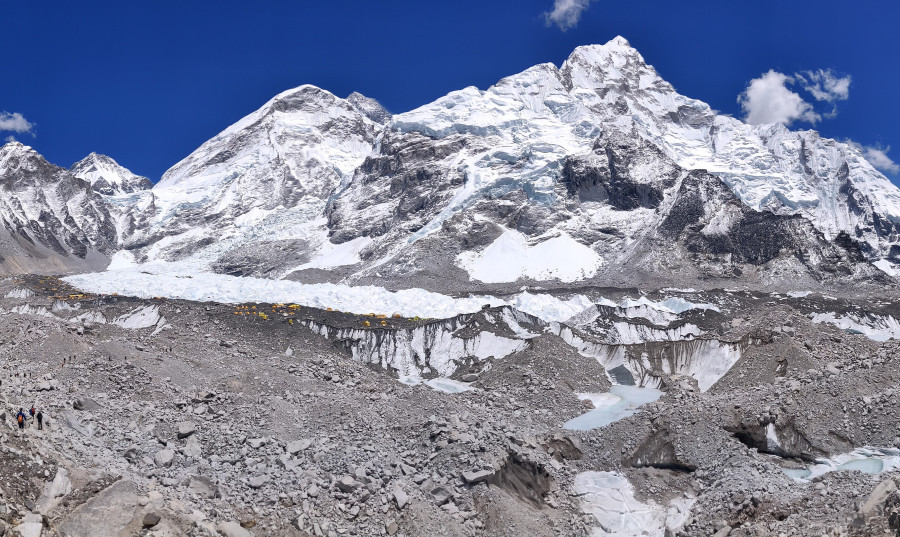Editorial
Climate of fear
The way we abuse nature is tantamount to destroying our own health and livelihood.
Nepal has for decades been experiencing the worst impacts of climate change, and the repercussions have only gotten worse in the past few years. Glaciers are melting at an alarming rate—65 percent faster in the past decade than in the previous one. Monsoon each year brings devastating floods and disasters, taking a heavy toll on people’s lives and livelihoods. No less problematic are the unprecedented changes in the weather patterns and rainfall and declining snow in the mountains. Glacial runoff and retreat, once uncommon, are now frequent. Worse, Nepal’s mountain regions have witnessed a temperature rise of 1.8 degrees Celsius when global warming is measured at 1 degree Celsius on average.
The efforts of the global community to mitigate the climate chaos in countries like Nepal—which have a small share of carbon emissions but bear the brunt of climate change—are insufficient. The recent remarks of UN Secretary-General António Guterres on the impacts of climate change in the Himalayas and the livelihoods of Nepalis, are thus pertinent. Visiting the Mt Everest region on Monday, Guterres witnessed a grim picture of the mountains and melting glaciers. He then took the issue to the world through X, a social media platform, stating, “…Glaciers are retreating; we cannot retreat. We must move forward with climate action.” Further, from the Annapurna Base Camp on Tuesday, he reiterated the need to stop “this war” against nature. It was a stirring call for the world’s leaders to act against climate change without further ado.
Not that Nepal hasn’t done anything to combat the consequences of climate change. The country has committed to working on adaptation, damage and loss, and climate financing on global platforms like the United Nations Climate Change Conference. However, the country, as usual, lags in terms of implementation. For instance, according to locals in the Annapurna region, in the last four decades, Annapurna Base Camp has faced severe impacts of climate change; however, the government has failed to pay heed and protect the area from glacial erosion. Similarly, in COP26, Nepal pledged to reduce greenhouse gases by 45 percent by 2030 and adopt clean, alternative and renewable energy. Unfortunately, the country’s road to clean energy seems long and serpentine.
Moreover, Nepalis have to realise that the way they abuse nature, and pollute rivers and air, is tantamount to destroying their own health and livelihood. Now is the time to give up the complacency that comes with Nepal being a negligible contributor, producing 0.1 percent of total global greenhouse emissions. We should keep in mind that Kathmandu is often ranked as the most polluted city in the world. Only when we adopt sustainable development practices can we cut down the country’s emissions and be in a position to question other countries for their share in carbon emissions.
It is important for both the government and the public to work together to keep further devastation at bay and create a better future for everyone. As Guterres emphasised, we have to act now. With the world preparing for COP28 starting November 30 in the United Arab Emirates, this time, Nepal should back up its pledge to protect the people and environment with robust plans, policies and delegation. The commitment and action of countries around the globe, including Nepal’s, should be to limit the global temperature rise to 1.5 degrees. Humanity’s future depends on it.




 16.12°C Kathmandu
16.12°C Kathmandu












%20(1).jpg&w=300&height=200)

